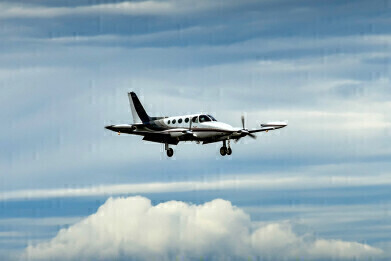Analytical Instrumentation
Aviation gas takes flight - The supercharge method
Mar 31 2023
From their inception over 100 years ago, piston-engine aircraft have been powered by gasoline. The importance of octane number and performance number properties of aviation gasoline is necessary to give pilots the confidence that the fuels will withstand the critical demands of aircraft engines. According to the US Federal Aviation Administration (FAA), more than 222,600 registered piston-engine aircraft can operate on leaded avgas (aviation gasoline) in the United States (U.S). Worldwide sales of piston-engine aircraft are expected to increase due to growth in the Asia Pacific. The consumption of aviation gasoline in the U.S. and worldwide will continue to grow. Therefore, there will remain a need for the aviation gasoline rating standard.
Since 1941, the CFR F4 engine has solely been the globally accepted test that is in accordance with ASTM D909 Supercharge Aviation Gasoline for rating high output aviation gasoline above 100 octane number. This method was designed around the CFR engine with additional equipment to mimic an aircraft engine’s operating conditions. There was a need to correlate laboratory engine test data with the rich mixture, maximum power characteristics of aircraft operating under take-off, and optimum performance conditions. The test results were designated the “rich mixture ratings.” Extensive investigations were carried out within ASTM between 1947 and 1952 in the interest of improving the Supercharge Method and adapting it so that both lean and rich mixture ratings would be achieved using a single procedure. By 1952, the impact of jet aircraft and the reduced emphasis on piston aircraft curtailed research efforts. However, renewed interest has been created due to changes in the composition and characteristics of aviation gasoline as well as the potential benefits that can be achieved through the use of modern instrumentation and computer functions.
The octane number scale was adopted in the late 1920s. Isooctane was assigned a value of 100 and n-Heptane a value of 0 (zero). Intermediate values of octane number are defined based on volumetric blends of these two pure hydrocarbons with the percent of isooctane in the blend being equal to the octane number. This scale was limited and created a problem when gasolines demonstrated knock resistance above 100 O.N. Ratings above 100 O.N. are measured in terms of reference fuels and not a number system. However, it was realized that neither the Isooctane/n-Heptane scale or the Isooctane + TEL scale provide a linear relationship to engine performance or power output. The adoption of the Performance Number scale as a useful measure of fuel quality provided a more understandable indication of quality.
This scale was derived empirically such that the performance number of an aviation fuel represents approximately its maximum knock-free power output, expressed as a percentage of the maximum knock-free power output of isooctane under comparable operating conditions.
The ASTM D909 Supercharge Method utilizes the CFR F4 engine under supercharged conditions. It measures the knock-limited power of a gasoline over a range of fuel/air ratios (F/A ratio) and intake manifold (boost) conditions. The engine is operated at a fixed compression ratio of 7:1 and a knock-limited power curve is generated, point-by-point for each fuel. To establish a point, F/A ratio and intake manifold pressure are manipulated to determine the combination which will cause incipient or light knock to occur. For this condition, the power output of the engine is measured by the dynamometer. The IMEP (Indicated Mean Effective Pressure) value is plotted as the ordinate on a graph using F/A ratio as the abscissa. Individual points, starting from a lean mixture condition and going toward the rich condition are determined step-by-step and at some F/A ratio the IMEP values will peak and points at richer mixtures will produce less power and hence lower IMEP values. This same process is repeated for each of two reference fuel blends, one generating a curve of lower IMEP values than the sample and the other generating a curve of higher IMEP values. The rating is determined by interpolation of the IMEP value for the sample between the IMEP values for the two reference fuels at the F/A ratio established for the peak IMEP of the lower-quality reference fuel.
The CFR F4 utilizes a dedicated control system which provides the capability to sense and display all critical temperatures and pressures, as well as the force indications for dynamometer load and the fuel system. This system provides automated control of the engine crankcase oil temperature and the inlet air temperatures. It also provides critical support to an operator in the following ways:
- Serving as a data acquisition system
- Providing an automatic calculator of fuel and air consumption and power measurement
- Organizing and displaying the critical values for each knock-limited power curve point
- Summarizing the values for all points on the power curves for the sample gasoline and the two primary reference fuels
- Functioning as an alarm system with a passive indication of non-critical conditions and active alarm action to shut the unit down in the event of a critical system condition
- Providing a hard copy printout of the results so that operator calculation of the rating value can be simply carried out
The CFR F4 continues to be the sole test instrument to certify aviation gasoline to high-quality standards that the industry requires.
As global demand for aviation gasoline continues to increase, CFR Engines Inc. remains committed to supporting the growth and the evolution of these fuels through continued development and enhancement of the CFR F4 engine.
Digital Edition
PIN 25.3 June/July
June 2024
Analytical Instrumentation - Recent Advances In Various Bench Scale Accelerated Oxidative Testing Methods For Fuels - Petrochemical Industry: Anton Paar Solutions Streamline Processes, Reduce H...
View all digital editions
Events
Jul 30 2024 Jakarta, Indonesia
Jul 30 2024 Jakarta, Indonesia
China Energy Summit & Exhibition
Jul 31 2024 Beijing, China
Jul 31 2024 Chengdu, China
Aug 05 2024 Moon Township, PA, USA


















